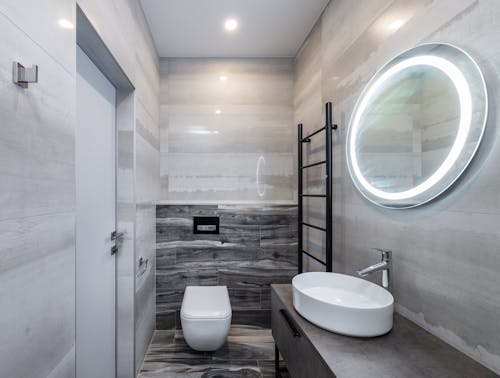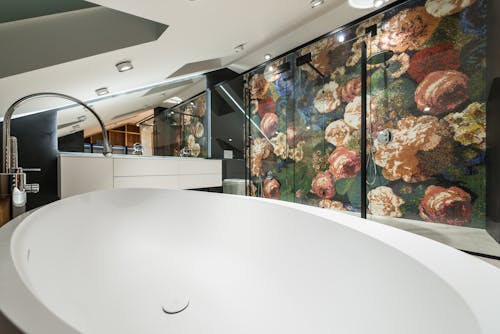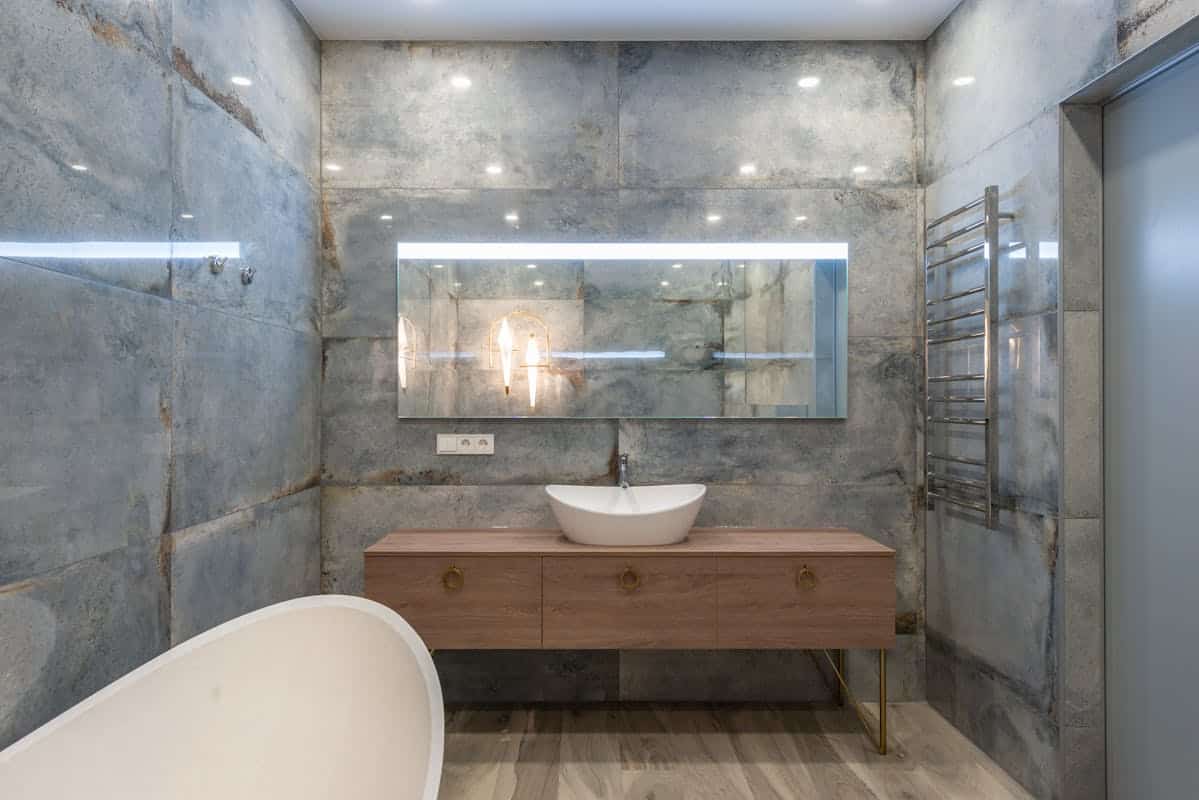When it comes to designing the perfect bathroom, one often overlooks the importance of a well-thought-out electrical plan.
From lighting to power outlets, having a detailed bathroom electrical plan is essential for both functionality and safety.
In this comprehensive guide, we will explore the ins and outs of creating a bathroom electrical plan that suits your needs.
Table of Contents
Understanding the Importance of a Bathroom Electrical Plan
A bathroom electrical plan is a detailed layout that outlines the placement of electrical components in your bathroom. It includes fixtures such as lighting, outlets, switches, and even ventilation systems. Having a well-designed electrical plan ensures that your bathroom is both functional and safe for everyday use.
Key Components of a Bathroom Electrical Plan
- Lighting: Proper lighting is crucial in a bathroom. Consider adding overhead lights, task lighting, and accent lighting to create a well-lit space.
- Outlets: Make sure to include an adequate number of outlets for appliances such as hairdryers, electric razors, and more.
- Switches: Position switches strategically for easy access and convenience.
- Ventilation: Proper ventilation is important to prevent humidity and mold build-up. Include a fan in your electrical plan to maintain air circulation.
Safety Measures for Bathroom Electrical Plans

The restroom is a haven for rest and self-care.However, there is a hidden risk associated with enjoying a relaxing tub soak or a refreshing morning shower: electrical and water don’t exactly mix.A thoughtfully designed bathroom electrical plan is essential to providing a secure and pleasurable bathroom experience.Here, we’ll go over important security issues to think about when designing the electrical structure of your ideal bathroom.
Taming the Water with GFCI Outlets
Because bathrooms are naturally rainy spaces, electrical safety must come first. Introducing Ground Fault Network Interrupter (GFCI) outlets, which serve as your primary safety against electric shock. These outlets are uniquely built to check the electrical current continually. The GFCI outlet immediately cuts the electricity to avoid a potentially dangerous situation if it detects a leak to the ground, which may result from contact with water.
All bathroom outlets that are located within a certain distance (usually 1.2 meters) of sinks, showers, and bathtubs are required by law to be GFCI-protected.This includes any outlets close to the toilet (for bidets, for example) and outlets that power bathroom exhaust fans. Keep in mind that GFCI outlets are an essential safety feature in your bathroom electrical plan—they shouldn’t be used in place of caution.
Illuminating Your Bathroom Safely
Lighting plays a vital role in bathroom functionality and aesthetics. But when it comes to a bathroom electrical plan, lighting fixtures need to be chosen with safety in mind. Here’s what to consider:
- Moisture Ratings: Look for fixtures with a proper Ingress Protection (IP) rating. This rating indicates the level of protection against dust and moisture. For areas directly in the shower or bathtub zone, an IP rating of 65 or higher is recommended. In areas with less moisture exposure, like near the vanity, an IP rating of 44 might suffice.
- Heat Production: Certain bulbs, like incandescent bulbs, generate significant heat. Opt for LED bulbs or fluorescent fixtures that emit minimal heat, reducing the risk of burns or fire hazards.
- Placement: Avoid placing light fixtures directly above the bathtub or shower. Strategically place them on walls or the ceiling outside these high-moisture zones.
By following these guidelines, you can ensure your bathroom electrical plan incorporates safe and effective lighting solutions.
Powering Your Needs with Caution
Having the right outlets in the right places is crucial for a functional bathroom. Here’s a breakdown of essential outlets to consider in your bathroom electrical plan:
- Vanity Area: Multiple outlets with GFCI protection are needed for powering electric toothbrushes, shavers, hair dryers, and other appliances.
- Other Zones: Consider outlets near the toilet for a bidet (if applicable), and a dedicated outlet for the bathroom exhaust fan.
- Optional Considerations: Depending on your wishlist, you might want an outlet near the bathtub for a whirlpool or heated towel rack.
Remember, avoid extension cords in the bathroom – they pose a tripping hazard and are not recommended in damp environments.
Planning for Future Comfort

While crafting your bathroom electrical plan, consider incorporating some “future-proofing” measures. Adding a few extra outlets or empty conduit pipes behind walls can provide the flexibility to accommodate future upgrades, like installing smart mirrors or heated floors, without extensive electrical work later.
Partnering with a Licensed Electrician
Even though this guide gives you crucial safety tips, it’s important to keep in mind that choosing qualified electricians to create a safe and functional bathroom electrical plan is best left to them. They have the know-how to make sure that construction codes are followed, suggest the best locations for outlets and fittings, and manage the electrical work effectively and safely. Don’t be afraid to speak with an official electrician about your ideal bathroom and develop an electrical design that takes into account your vision for a stunning and tranquil area in addition to safety and usefulness.
Tips for Designing an Efficient Bathroom Electrical Plan
Your bathroom may be a haven for relaxation and rejuvenation, but it’s also a space with unique electrical needs. A well-designed bathroom electrical plan is crucial for safety, and functionality, and creating a comfortable, aesthetically pleasing environment. Here are some essential tips to guide you in crafting an efficient bathroom electrical plan:
Prioritize Safety in a Damp Environment
Bathrooms are naturally moist spaces because of the showers, bathtubs, and overall humidity. There’s a serious chance of electrical shock from this humidity. It is essential that your bathroom electrical plan include Ground Fault Circuit Interrupter (GFCI) outlets in order to ensure the safety of everyone using the space. In order to prevent electrical shock, GFCI outlets are specifically made to detect imbalances in electrical current, which can happen as a result of water contact, and to cut off power right once. According to code, GFCI outlets must be installed 1.2 meters away from any bathroom water source, such as sinks, bathtubs, and showers.
Light Up Your Bathroom for Functionality and Ambiance
Effective lighting is a key component of any well-designed bathroom. A well-planned bathroom electrical plan incorporates different types of lighting to cater to various needs:
- General Lighting: This provides overall illumination for the entire bathroom. Ceiling lights or recessed lights are ideal options for general lighting.
- Task Lighting: Focused lighting is essential for specific tasks like shaving, applying makeup, or grooming. Vanity sconces mounted on either side of the mirror or a lighted mirror itself provide excellent task lighting.
- Accent Lighting: This creates a spa-like ambiance and enhances the overall aesthetic of your bathroom. Consider wall sconces with dimmer switches or LED strips placed under cabinets to create a relaxing atmosphere.
Powering the Essentials: Outlets for Every Need
A well-equipped bathroom requires a strategic placement of electrical outlets to ensure all your appliances and fixtures function properly. Here’s a breakdown of essential outlets to include in your bathroom electrical plan:
- Multiple outlets near the vanity: This caters to electric toothbrushes, shavers, hair dryers, and other personal care appliances.
- Outlet near the toilet: Consider a dedicated outlet for a bidet if you plan on installing one.
- A dedicated outlet for the exhaust fan: A bathroom exhaust fan is crucial for ventilation and preventing mold growth. Ensure your bathroom electrical plan includes a dedicated outlet for proper exhaust fan operation.
- Optional Outlets: Depending on your wishlist, consider including an outlet near the bathtub for a whirlpool or heated towel rack.
Planning for Future Flexibility

As you’re finishing up your bathroom electrical design, think about adding a few more components for future flexibility. Future upgrades are made simple by leaving a few extra outlets or empty conduit lines behind walls.Installing heated flooring, smart mirrors, or other future tech you might wish to add into your bathroom could be made easier with this.
Consulting a Licensed Electrician is a Key
While this guide equips you with valuable information for designing an efficient bathroom electrical plan, it’s crucial to emphasize the importance of seeking professional help. Licensed electricians possess the expertise and experience to ensure your electrical plan adheres to all building codes and safety regulations. They can recommend optimal placement for outlets and fixtures, handle the electrical work safely, and ensure your bathroom is wired for functionality and style.
Keeping Costs in Mind
Creating an efficient bathroom electrical plan doesn’t have to break the bank. Here are some budget-friendly tips:
- Utilize Existing Light Switch Locations: If possible, maximize the use of existing light switch locations to minimize rewiring costs.
- Consider Dimmers: Installing dimmer switches allows for adjustable lighting, creating different ambiances and potentially saving energy costs.
- Explore Multi-Functional Fixtures: Vanity lights with built-in outlets can serve a dual purpose, reducing the overall number of fixtures needed.
By following these tips and consulting with a licensed electrician, you can design a safe, functional, and beautiful bathroom electrical plan that meets your needs and stays within your budget. Remember, a well-designed electrical plan is an investment that will enhance the comfort, safety, and enjoyment of your bathroom for years to come.
Conclusion
Creating a comprehensive bathroom electrical plan is key to ensuring a safe and functional space. By incorporating the right components and following safety measures, you can design a bathroom that meets your needs while enhancing the overall experience. Remember to consult with a professional electrician to help you bring your electrical plan to life.
Explore more insightful tips and tricks for your bathroom electrical plan to create a space that is both practical and stylish. Start planning today for a bathroom that truly shines!
Why is a bathroom electrical plan important?
A well-designed bathroom electrical plan is crucial for safety, functionality, and convenience in your bathroom. It ensures that electrical outlets, lighting fixtures, and ventilation systems are properly distributed to meet your specific needs and comply with electrical codes.
Where can I find more information about bathroom electrical plans?
Online resources like the National Electrical Code (NEC), home improvement websites, and design blogs offer valuable information and guidelines for creating a safe and functional bathroom electrical plan. You can also consult with a qualified electrician for personalized advice and assistance.

